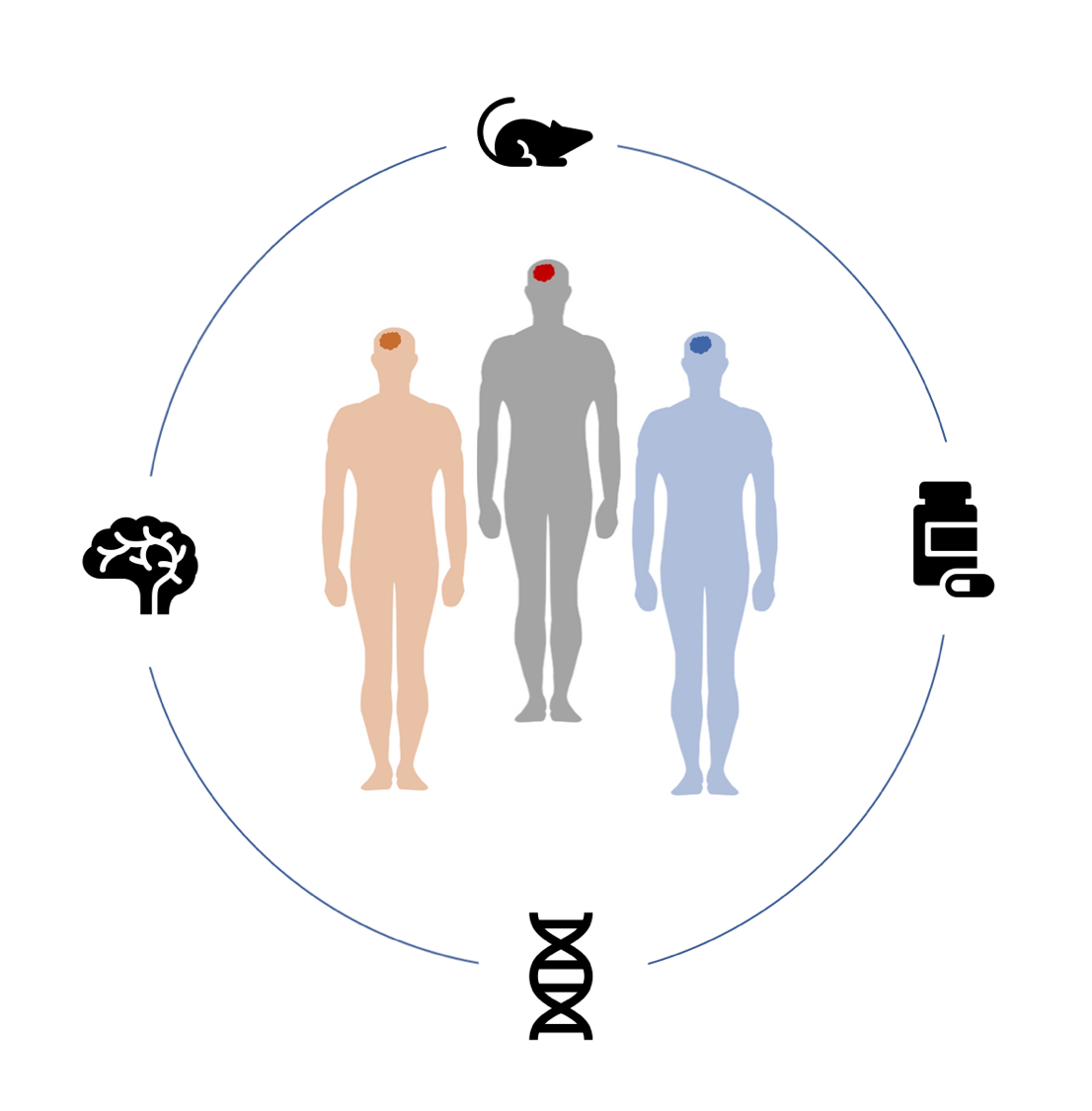Understanding Brain Cancer and Developing a Cure for GBM
The Nathanson Lab takes an integrated and interdisciplinary approach to study brain cancer and to identify new and more effective treatments for this disease. This consists of four primary research components including: 1) Develop clinically relevant preclinical models to investigate brain cancer 2) Investigate the critical functional biological processes that drive brain tumor growth and survival 3) Discover brain-penetrant therapeutics to induce brain tumor kill and 4) Incorporate molecular diagnostics – including next generation sequencing and molecular imaging – to identify brain tumors most likely to respond to a specific therapy.
Develop clinically relevant preclinical models to investigate brain cancer
A preclinical cancer model will be most impactful when it accurately reflects the human disease. Using specialized methodology developed by our lab, we have created various cell culture and mouse models of brain tumors that capture the vast pathological and molecular diversity of the human disease. These models serve as the foundation for our biological and drug development research programs, enabling our preclinical studies to have the greatest translational impact.
Investigate the critical functional biological processes that drive brain tumor growth and survival
Brain tumors rely on specific functional processes to fuel tumor growth and survival. Two critical processes include 1) altered metabolism to obtain sufficient nutrients for tumor cell division and 2) anti-apoptotic programs to maintain tumor viability under various treatment paradigms. Through highly collaborative efforts, we are utilizing innovative tools to study tumor metabolism and apoptosis in a comprehensive and quantitative manner. These efforts are beginning to reveal potentially targetable vulnerabilities to kill brain tumors.
Discover brain-penetrant therapeutics to induce brain tumor kill
An effective drug against brain tumors must be able to cross a physical barrier known as the blood brain barrier (BBB) in order to reach and kill brain tumor cells. However, the great majority of drugs (over 95%) cannot cross the BBB and enter the brain. Through our own medicinal chemistry efforts (via collaborations with Professor Michael Jung), we are developing novel brain penetrant therapies designed to SPECIFICALLY target brain tumor cells without affecting normal brain cells (e.g., neurons and astrocytes). Thus far, this work has led to the identification of several new potent and brain penetrant drug candidates, some of which may ultimately be evaluated in brain tumor patients.
Incorporate molecular diagnostics to identify brain tumors most likely to respond to a specific therapy
Each patient’s brain tumor has a unique molecular signature that distinguishes it from another patient. This signature can have profound implications on whether the tumor will respond to a particular therapeutic. Using next- generation sequencing (RNA and exome sequencing) we are obtaining the molecular signatures for all of our preclinical model systems and evaluating whether our newly therapeutics are more or less effective against brain tumors with a specific molecular signature. Moreover, we incorporate non-invasive molecular imaging – such as positron emission tomography (PET) – to assess whether a specific therapeutic alters the molecular imaging profile of tumor in our mouse models and in patients.
Our Collaborators and Donors











